Not Quite Alone
Project Duration: 1 Week
Publish Date: August 27th, 2022
A Game Jam Project
An rogue-like action game based inspired by games such as "The Binding of Isaac" and "Hades". Created for Brackey's Game Jam 2022.2!
Contributors:
Programmer & Project Lead: Bryan Huke
Game Designer & SFX: Jarrett Workman
Pixel Artist: GrandCrossAge
Music Composer: Sam Curtice
Concept Artist: HuntArtist
Project Overview
This game jam project was created within a week to challenge our skills as designers. During this week long project, myself and the rest of the team tried to emulate the theme of "You're Not Alone". The first hurtle involving deciding on what kind of game we wished to create that fit this theme. We eventually decided to go with a rogue-like game that involved a kid exploring a haunted house and dealing with ghosts. We knew that scope was going to be our biggest enemy, so choosing to focus on a 2D game was simple. We quickly set to work on creating our initial mechanics and got a working game going, polishing it as the week came to it's conclusion.

Personal Responsibilities
Room Design:
While Bryan Huke was busy creating the map generation, we needed objects that could be used and explored using that map generation. Early on we decided that every room should be the same size, and should easily fit on the screen so that a camera system could control the view in game. Each room also should have possible locations for their doors: North, East, South, and West. Once we decided that, and we wanted a variety of rooms that were certain to fit certain shapes (cross, T, Pipe, and dead ends), I got to work creating many rooms that fit those themes with places for furniture and obstacles.
Encounter Tables:
Once all of the enemy logic had been designed and programmed, we needed these enemies to spawn in certain patterns to give the player a unique experience while playing. We split these encounters up into levels of difficulty: Easy, Normal, and Hard. Each type of difficulty would spawn a number of enemies and spawn them in certain patterns. While the task at hand was more time consuming than it was difficult, each of these had to be tested to make sure that they worked and fit the pacing of the game. You'll notice that there is a lack of rooms that spawn three of the shy ghosts.
SFX Design:
Music and SFX sound directions had been decided early on in development and been prepared for, however we still needed SFX's to be added to the game so that the world still felt more alive. My philosophy going in, was to make each sound of the enemies, the player, and especially the bosses unique. There is no sound that is reused throughout the entire game besides the shotgun sound used by both the Wardrobe boss, and the Fridge part of the NotSink Boss. The intention here was to make sure that the player always knew what they were dealing with and were never surprised by something happening in world. This also involved some light coding where the SFX effects needed to be called during the right moment in code.
Game Balancing:
A smaller role that I played was making sure that the game was balanced for at least the first two floors of game play. This involved tweaking spawn rates for the health pick ups that appear when you clear a room, as well as the amount of damage the player does versus enemy health. Because of the exponential rate the player is able to collect power-ups and continue on through the dungeon, only the first two levels were considered essential while anything level 3 and up allowed the player to go above and beyond, gaining more and more powerful as they dove even deeper into the experience.
Project Management:
Towards the ends of this project, we were meeting up constantly to make sure that we were going to meet the Game Jam deadline. During these meetings, I'd maintain lists of requirements by priority from low to high. This allowed our team to review the notes as we worked and mark different aspects as in progress, or done. While this was primarily to make sure everyone knew what needed to be done, this was still a valuable aspect to working on this project.
Level Design
Creating worlds for players to explore has been one of my biggest passions ever since I was first fascinated with worlds beyond my wildest dreams. For this project, I created modular rooms that could be pieced together by Bryan Huke's level generation code to create large areas that the player could explore.
These pictures were taken during development.
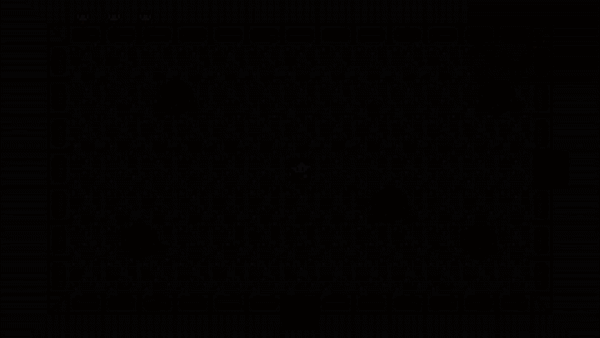
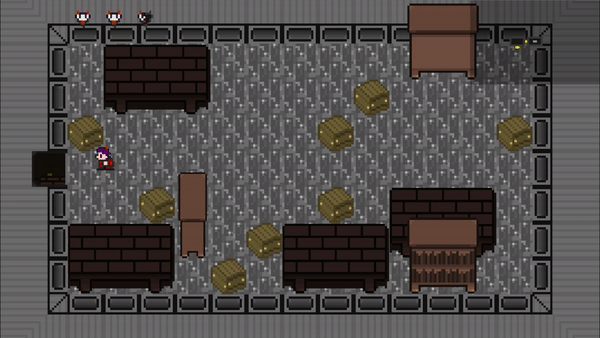
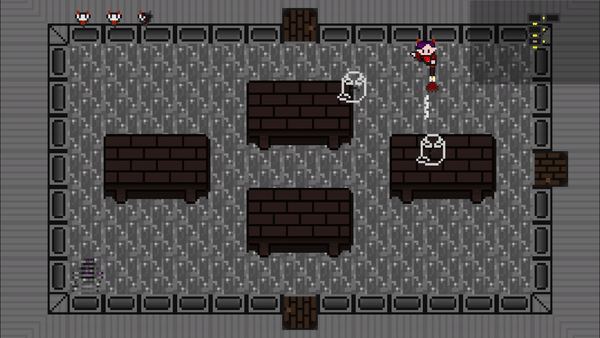
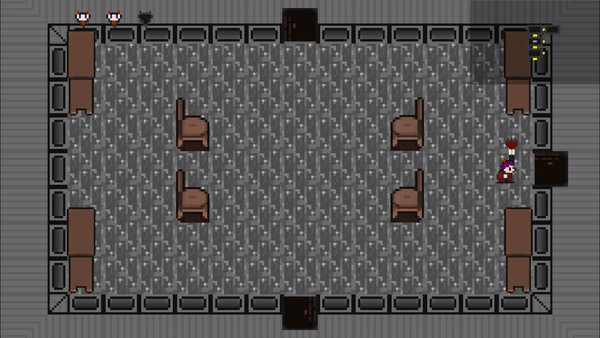
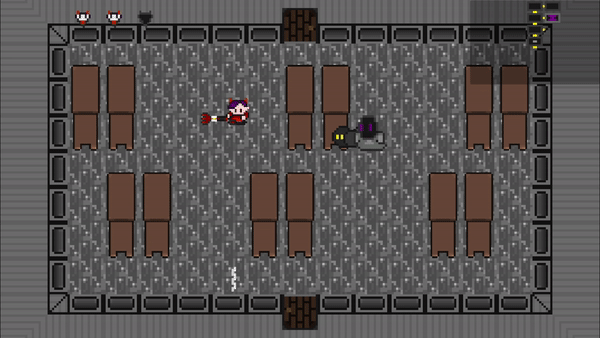

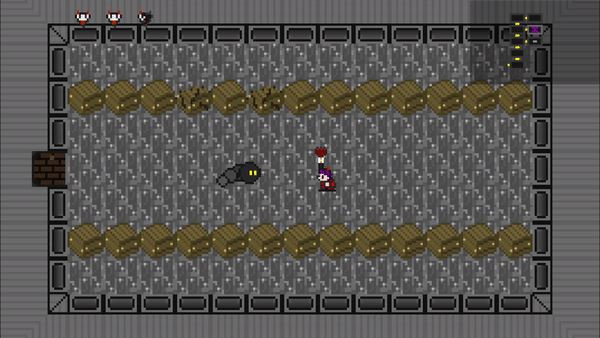
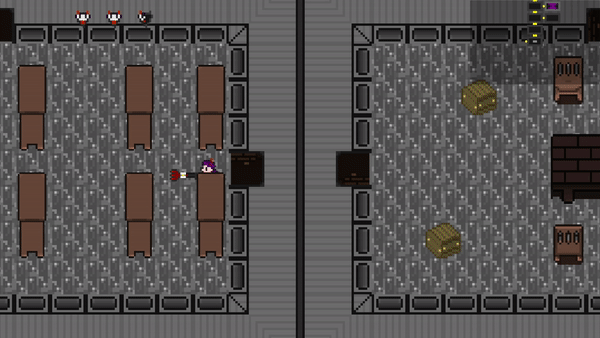

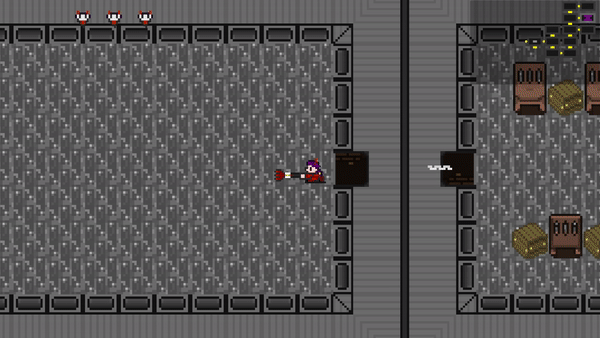
Challenges and Key Takeaways
A small overview of what I learned from working on this project
Risk Management:
As a team we knew that risk management was something that we needed to address. What if we were unable to find an artist? What if we aren't able to make enough content? So on and so forth. One thing I evaluated as a risk were my commitments to my family preventing me from working on this project. I'd had time to prepare and arrange things so that I could balance life, work, and this project. Something I had considered, but had no way to mitigate was a family emergency cropping up about halfway throught he project.
Project Scope:
Going into this project we knew that scope was going to be our biggest enemy. So we made the choice to start small and build up on the project until we were happy with it or we ran out of time. Ultimately this meant that the base gameplay was practically perfected before we moved onto importing art assets, sound, and started adding more to the game.
Creating Memorable Moments:
One of my favorite moments from this game jam was when we started to add in the SFX sound effects, and all of the boss sounds were using the same effects. I decided to make each one unique, that way when the different parts of the Kitchen boss were firing from their 'dead' state, the player feedback would be more helpful. The first item to get this treatment was the stove, and hearing it use it's unique sound to fire a machine gun of fire into the room gave me chills.
Learning about WET Code:
WET Code, or "Write Everything Twice" Code was a concept I was introduced to in this project. Not only was it the murmurings from Bryan about how he could've avoided WET code, but it was also his instruction on how I could avoid it myself by writing helper functions. I didn't do a lot of coding for this project, but I did enough that I feel a lot more comfortable helping with the next project. Not only did I learn about ways to mitigate it however, but I also learned that trying to hard to avoid WET code could also be a bad thing, as you try to condense code for now reason for re-use, when really you'd only be saving a single line.



